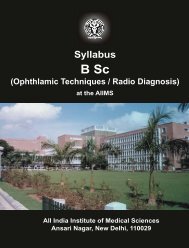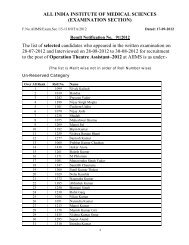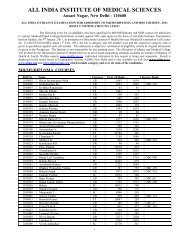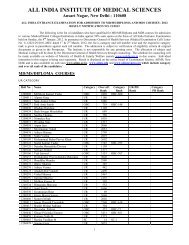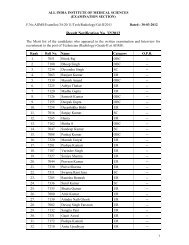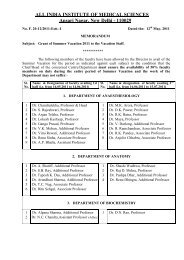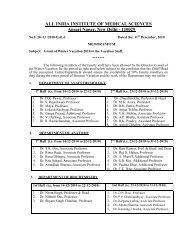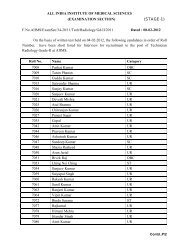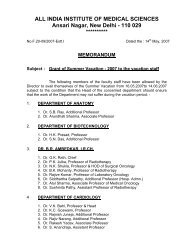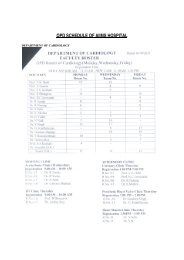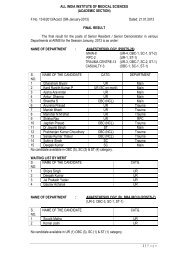Manual for long-term pharmacotherapy - All India Institute of Medical ...
Manual for long-term pharmacotherapy - All India Institute of Medical ...
Manual for long-term pharmacotherapy - All India Institute of Medical ...
Create successful ePaper yourself
Turn your PDF publications into a flip-book with our unique Google optimized e-Paper software.
dosage regimens makes it possible to supervise the ingestion <strong>of</strong> naltrexone from the treatment centre (directly<br />
observed treatment.)<br />
Progress in treatment is de<strong>term</strong>ined by psychosocial parameters (e.g finding a job, job per<strong>for</strong>mance) and<br />
absence <strong>of</strong> drug abuse as confirmed by urine tests.<br />
Retention / Compliance<br />
Naltrexone maintenance is effective as <strong>long</strong> as the drug is taken regularly. Despite it's relatively pure<br />
antagonist activity and minimal side effects, naltrexone has not been widely accepted by addict and has a very<br />
high early dropout rate. This may in part be due to the fact that naltrexone does not have any agonist properties<br />
and thus does not induce euphoria. In large multimodal programmes in USA, only 5-10% <strong>of</strong> opiate dependent<br />
patients show an interest in naltrexone at any given point in time and many patients drop out early. Only 10-<br />
20% takes naltrexone <strong>for</strong> 6 months or <strong>long</strong>er, although its acceptance among (opiate users) certain target<br />
groups such as health pr<strong>of</strong>essionals, employed individuals and <strong>for</strong>mer prisoners on parole is high. Retention<br />
and compliance have been best in motivated individuals with strong support systems. Conversely,<br />
individuals with poor socio-economic supports or few incentives <strong>for</strong> rehabilitation tend to fare poorly.<br />
However, even short <strong>term</strong> (30 days or more) treatment with naltrexone has been associated with improved<br />
outcome at 6-month follow up. Appropriate patient selection and explanation <strong>of</strong> need <strong>for</strong> adequate duration <strong>of</strong><br />
therapy can reduce the drop out rate. Naltrexone works best in the presence <strong>of</strong> a structured rehabilitation<br />
programme.<br />
Guidelines <strong>for</strong> providing naltrexone maintenance treatment<br />
�Good occupational functioning<br />
�Good social support<br />
�Higher motivation<br />
�Short duration <strong>of</strong> drug use (3years or less)<br />
�Been on agonist maintenance <strong>for</strong> several months and has achieved good occupational and social<br />
functioning<br />
�Opts <strong>for</strong> antagonist maintenance when given a choice<br />
�Clearly prepared <strong>for</strong> abstinence<br />
One or more <strong>of</strong> the above criteria may be satisfied.<br />
These guidelines should be used a<strong>long</strong> with clinical judgment.<br />
42




